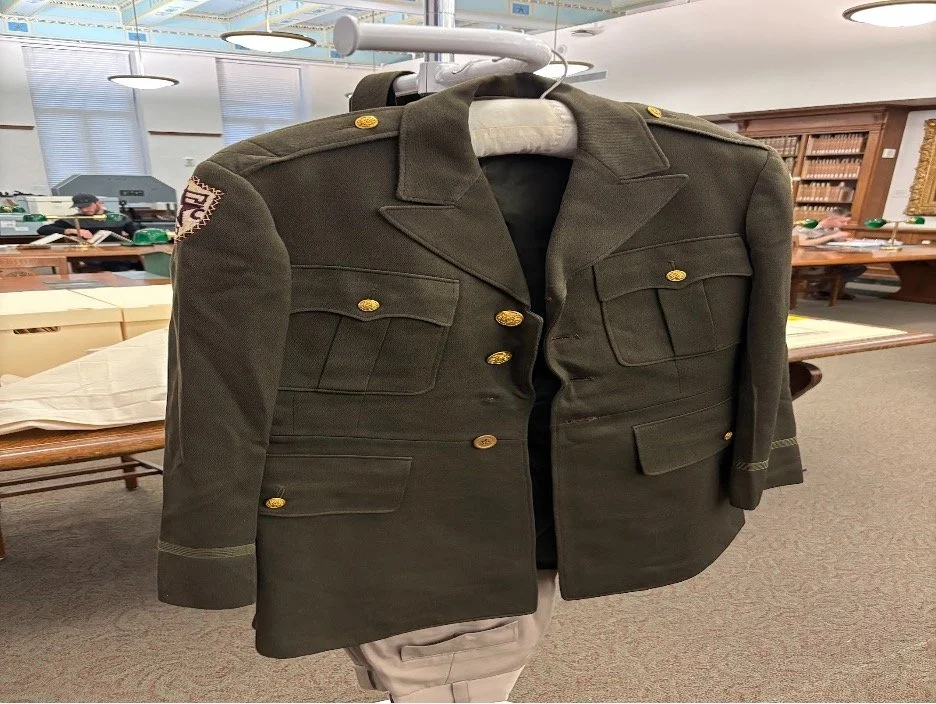Texas A&M Corp of Cadets’ uniforms have undergone several changes over the years. The years 1903, 1913, 1917, and 1965 saw significant transformations in apparel. It seems likely that uniform transformations were synonymous with the United States’ political and/or military operations which required an increase in armed forces.
While the image on page twenty one of the Aggieland reflects physical transformations in uniforms, this yearbook also contained a candid photo mirroring the sense of identity and inclusion that the Aggie Corp uniform came to represent. A year prior to this yearbook’s publication men of color were permitted to register as cadets. Just a year later, the yearbook featured an image of an African American showcasing the continual inclusive advancements of the Corp.
Sourced from student Brooklyn Waldrop
Aggieland 1965, 21
Aggieland 1965, 55
Corp uniforms require a level of articulation and preparation. First, a Corp member must pin their brass, medals and other adornments earned in their correct location, down to the exact millimeter. The shirt, pants, and tie are to be both wrinkle and dirt free. Shoes are to be shined and the belt while not visible, is to be looped correctly with the buckle shined and flush with the zipper seam. Furthermore, women are to wear their hair in a tight bun, and men are to be cleanly shaved. The neatness and expertise that goes into putting on a uniform is symbolic of the university’s core values of excellence.
This uniform is classified as a “class alpha,” typically worn to memorials such as Silver Taps, Aggie Muster, and every year at the anniversary of 9/11.
Pictured here is a uniform part of the “Bastogne Exhibit” housed in Cushing Memorial Library and Archives. While the overall look of the uniform resembles the Corps’ modern Alpha top, there remain subtle differences, positioning the uniform in the timeframe of the Second World War.
Cushing Archives “Terrence Reininger ’71 Garment Bag”
The often-highlighted aspects of Corp life revolve around militaristic discipline and ceremonial tasks, while these certainly constitute a significant part of Corp character there remain other characteristics. The Duncan Waiters, later known as the Duncan Volunteers in 1986 are exemplary of often overlooked aspects of the Corp, service and loyalty. Alongside their ceremonial Corp uniforms those who participated in this service project received a new type of uniform. In the case of Terrance Reininger, he kept his Duncan Waiters apparel in one of his five garment bags. This suggests that this garb carried not only a memory of the service given that day, but a reminder of the service character that all Corp seek to embody. Corp service came in many forms, not least, food service.
Sourced from student Jesus Hernandez
Aggieland 1971, 329




